Yoga for Epilepsy uses certain yoga poses and pranayama techniques. Epilepsy, more commonly known as fits or seizures, happens when the brain cells face an unexpected intense trigger. There are certain medications available that could help with epilepsy management, but they come with various side-effects. Yoga asanas and Pranayama could help in restoring the body-mind coordination to a certain extent, thereby training the brain cells to refrain from becoming hyper-excited.
All the standing poses are ideal for those who are prone to seizures as they strengthen the nerves and the muscles located around the spine. Forward bends are soothing for the nerves of the sympathetic system while the backward bends stabilize the entire nervous system. However, the most recommend practices for epilepsy are inversions and calming breathing practices. Hence, it is advisable to learn the poses and breathing techniques right from a yoga teacher before trying them at home.
Here are some of the most commonly practiced yoga poses and Pranayama techniques for epileptic patients.

Yoga for Epilepsy – Beneficial Yoga Poses
Balasana is the first in the Yoga for Epilepsy series of poses. It is perfect to stabilize your unsteady mind and calm your brain. It also offers gentle stretch for your back, hips, and neck.
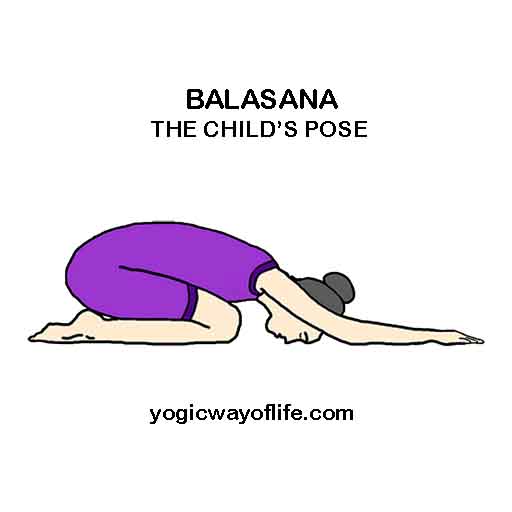
Start in Vajrasana. Inhale and swing your arms over your head, straightening and lengthening the spine. While you breathe out, fold forward, and rest the forehead on the mat. Stretch out the arms on the sides, palms flat on the mat. Let the abdomen rest on the thighs. Stretch out the knees as wide as your hips, tips of the big toes in touch. Close your eyes and relax into the pose, breathing in and out through the nose. Hold the pose for the next seven to nine breaths.
Inhale and gently walk your palms back. Exhale and on the next breath in, straighten your torso to come back into Vajrasana.
Kapotasana is the second pose in the Yoga for Epilepsy series. It is a very intense backbend-cum-inversion that requires a strong core and flexible back. Refrain from practicing this pose during your menstrual cycle or if you have any abdomen-related health conditions.
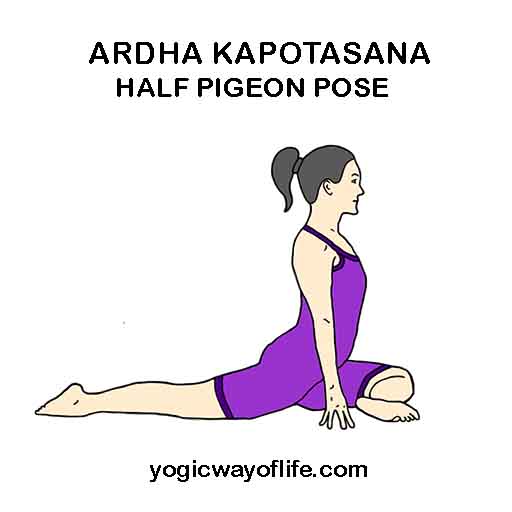
From Vajrasana inhale and lift your body from the heels to come into a kneeling position. Let the tops of your feet rest on the mat. Extend the toes backward. Inhale and lift the arms to the ceiling. On an exhale, push the hips forward. Inhale, engage the core and squeeze the muscles of the buttocks. On the next exhalation, hold the respective ankles of the feet, one at a time. Roll the shoulders backward and keep pushing the hips forward. Stay here for five breaths.
Take a short inhalation and as you exhale, slide the palms down to rest them on the mat. Twist the knee gently to rest the palms on the mat. Breathing deeply, and keeping a check on your lower back, slide the hands to cup the heels and bring the elbows together. Pressing the elbows against each other, push the hips forward to deepen the backward bend. Rest the crown of the head on the heels. Hold the posture without losing the length of the spine for at least five breaths.
To come out, roll your spine up gently. Rest in Balasana.
Sarvangasana is the third pose in the Yoga for Epilepsy series. Inversions are considered the most beneficial for epileptic people as they stimulate the entire nervous system. While Sirsasana would be a wonderful asana for practice, it needs an extremely strong core and lot of practice to master the pose. Salamba Sarvangasana or supported Shoulder stand is one of the intermediate poses that one could master easily.
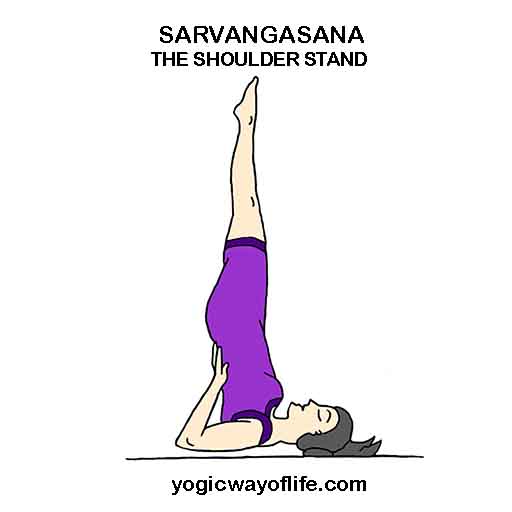
After completing Balasana, lie down on your back. Exhale and on an inhale, swing your legs to allow them to come perpendicular to the mat. Breathing out, lift your waist off the mat, pushing your legs towards your head. Support your waist with your palms. Slowly, straighten the legs in such a way that the entire body is comes perpendicular to the mat. Hold the posture for seven to nine breaths. To exit, slowly release the torso to the floor, vertebra by vertebra. Lie down for a couple of breaths in Shavasana before practicing Paschimottanasana.
Paschimottanasana is the next in the Yoga for Epilepsy sequence of poses. It is a simple inversion as well as forward bend that calms the mind and promotes detoxification.
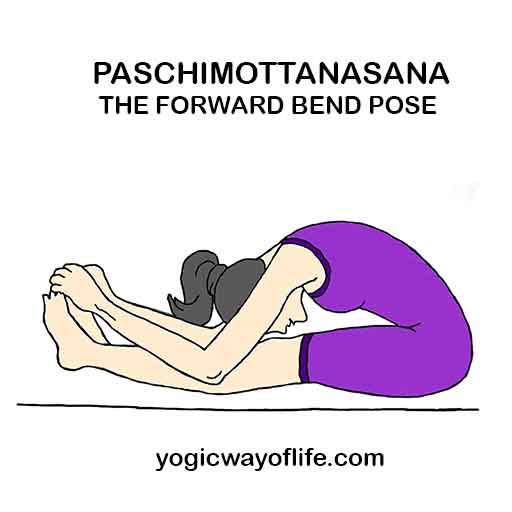
Turn to your right and sit up. Stretch out your leg, resting the sitting bones on the mat. Inhale and sweep your arms up. Exhale and fall forward from your hips, resting your belly on the thighs. Hold your leg, wherever your hands reach and relax the body. Deepen the fold with exhalations. Hold the posture, breathing deeply, for seven to nine. Inhale and come back to starting position. Wait for a couple of breaths before practicing Pranayama.
Yoga for Epilepsy – Pranayama Techniques
As the name suggests, the practice cools the body and mind. It could also keep the nerves calm, thereby stabilizing the brain. It also calms the Pitta.

Sit in a comfortable seated posture, palms resting on your knees. Tuck your chin to the chest gently. Curl your tongue from the sides so that it resembles a narrow tube, tip of the tongue resting just outside your lips. Take a slow deep inhalation through the tongue, filling the abdomen, chest, and neck in that order. Pull the tongue in and close the mouth. Exhale slowly through the nose. This is one round of Sheetali Pranayama. Practice at least ten to fifteen rounds.
Anulom Vilom is the second breathing technique in the Yoga for Epilepsy series. Alternate nostril breathing is calming, yet rejuvenating. You can practice 15 rounds of this Pranayama on empty stomach daily to keep your brain cells at peace.
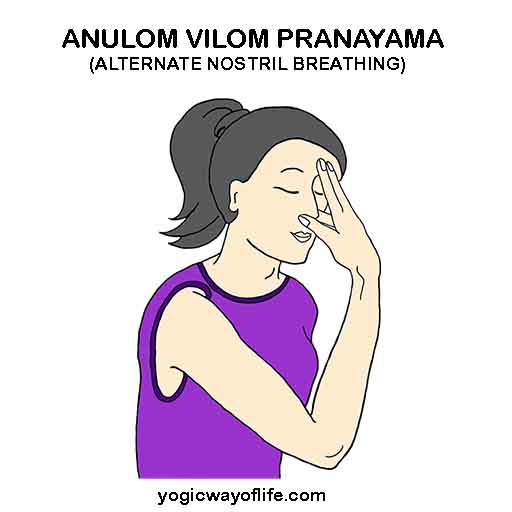
Sit in any comfortable seated, upright posture. Close your right nostril with your right thumb. Use your right index finger to close your left nostril. Rest your index and middle fingers of the right hand between your brows. Extend your little finger to the ceiling. Exhale completely through your left nostril. Keeping the right one closed, inhale through your left for a count of four. Close your left nostril and exhale through your right nostril for a count of four. Inhale through the right and exhale through the left, maintaining the number.
Practice ten to fifteen rounds of Anulom Vilom Pranayama.
Yoga for Epilepsy – Resting Pose
Relaxing is quintessential to maintain the stability of the brain cells. And, Shavasana is the ideal yoga pose to relax and rejuvenate.
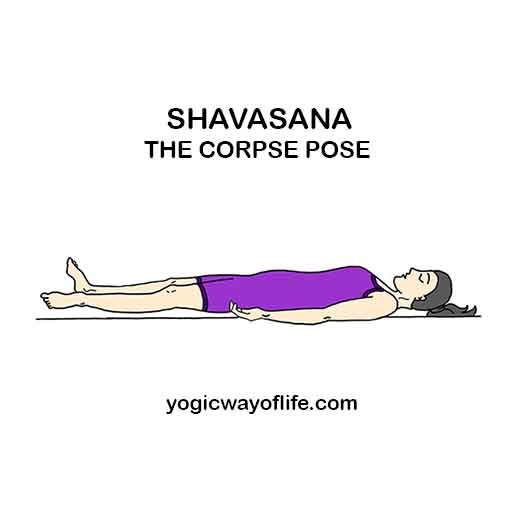
Lie down on your back, separating your legs wider than your hips. Allow the feet fall naturally away from your body towards the floor. Stretch your hands away from the body, palms facing the ceiling, leaving enough space for armpits to breathe. Let your body relax. Close your eyes and breathe through your nose. Allow the belly to expand and rise with each breath you take in. Let the tummy fall down and close to the spine as you exhale and release. Practice Shavasana for the next three to five minutes.
It is advisable to practice yoga regularly to see noticeable changes. Even if they do not help to reduce the epilepsy attacks, they could help to improve the quality of your life by helping you accept what is happening with you! Acceptance is the key to change. So start practicing yoga for epilepsy today for a better tomorrow.
